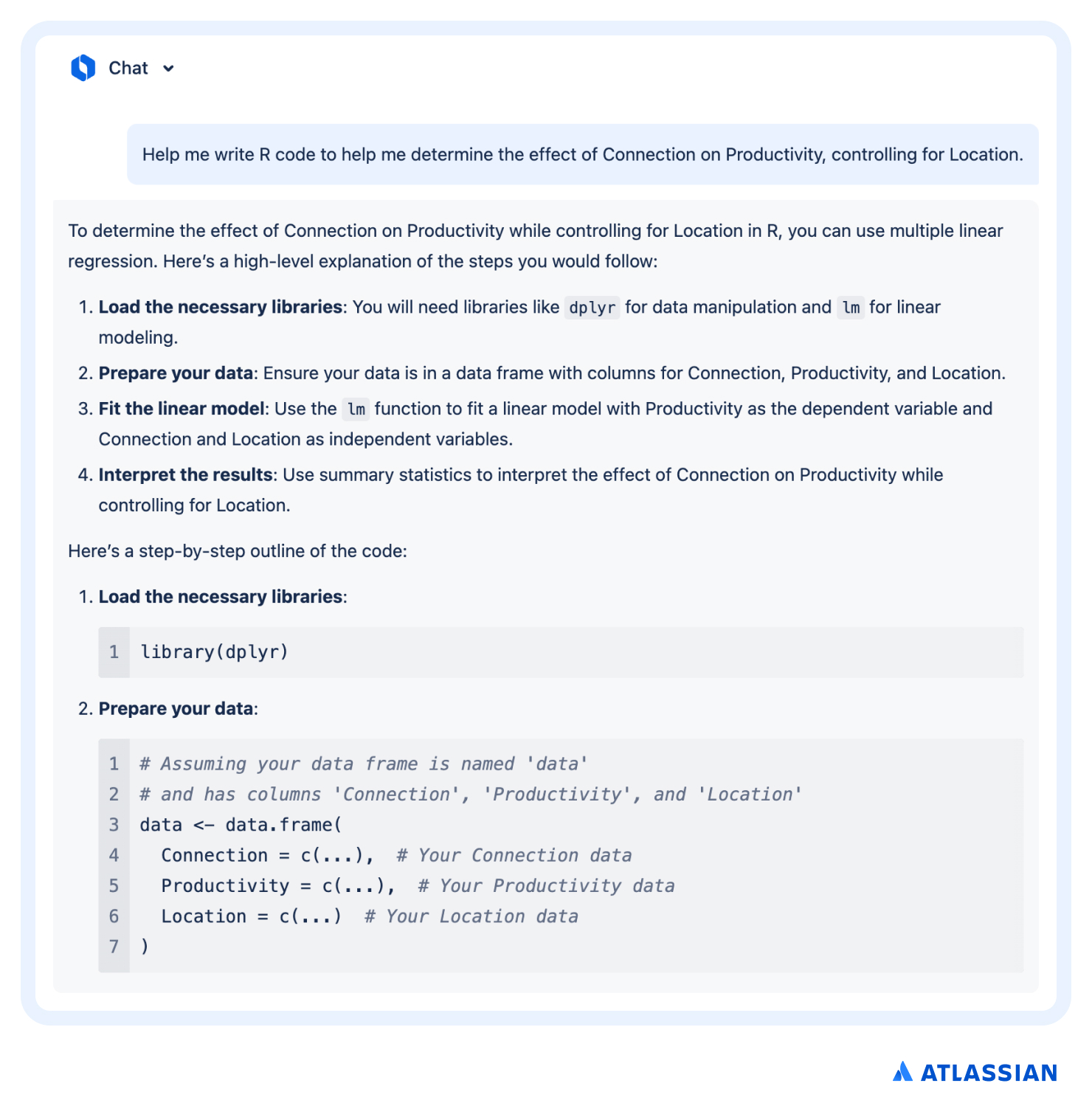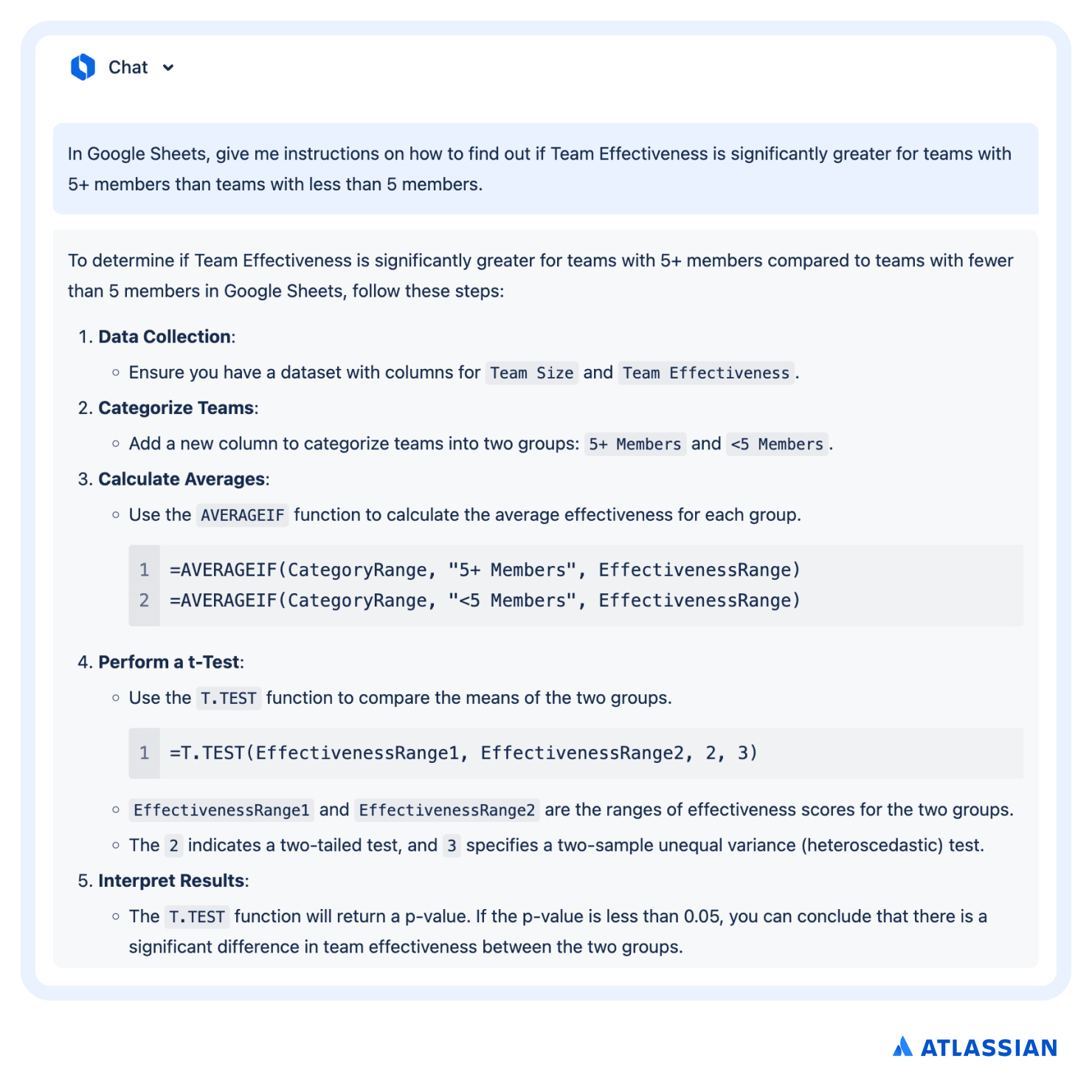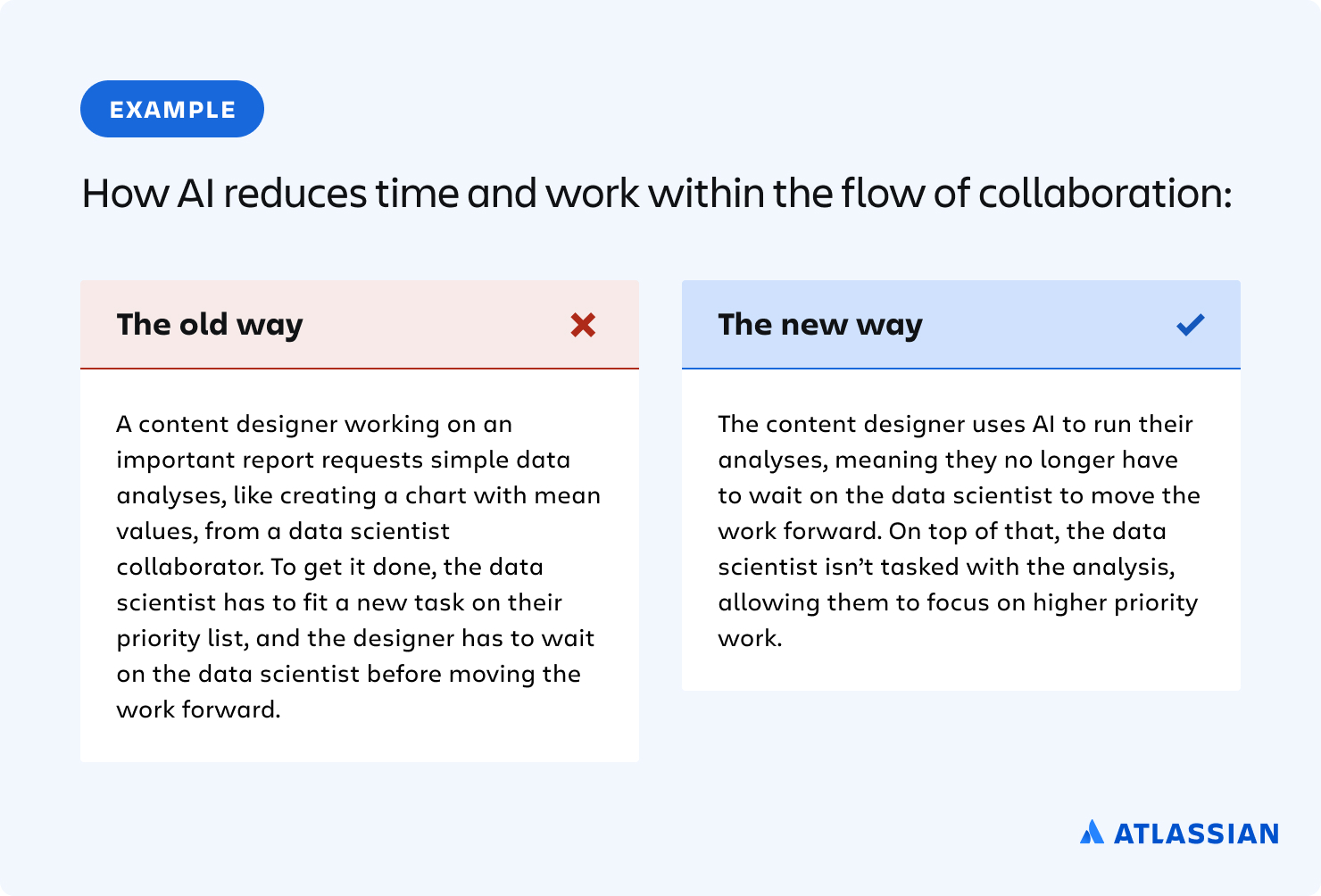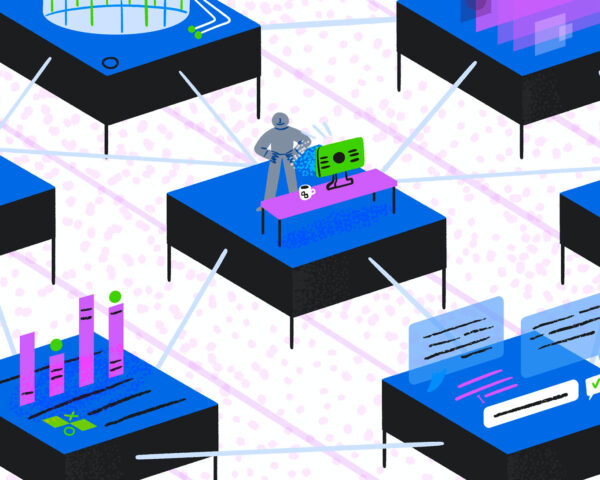Working with a technology as disruptive and complex as a GenAI chatbot for the first time can feel daunting. But what if it was as simple as starting a conversation with a friendly expert?
Whether you’re hesitant to get started or have tried to work with GenAI chatbot unsuccessfully, you’re in good company. Instead of giving up and never trying again, I want to share, as a behavioral scientist, how tweaking the way you engage AI will help you get more out of each interaction.
Our research shows it’s worth it!
In a recent survey of 5,000 knowledge workers, we found that teams who regularly use AI in their flow of work are:
- 1.6x more effective at accomplishing their goals
- 1.9x more likely to be effective collaborators
- 1.9x more adaptable to change.
The key to unlocking these superpowers for you and your team starts with your mindset. If you stick with it, you’ll find that GenAI chatbots can empower you to make progress more quickly and confidently by broadening your knowledge and abilities.
Adopt an open mindset
How you perceive AI will influence how you interact with it. Your mindset sets the foundation for how helpful AI can be. Whether you realize it or not, you likely bring some cognitive biases when first approaching a chatbot. That’s normal and okay, but it’s important to understand how your expectations may be keeping you from getting your desired result.
An interaction with AI is a collaboration – patience and effort are essential for it to be fruitful. Instead of treating AI as a static tool, such as a search engine, engage AI as a thought partner in your flow of work. A successful interaction is dynamic and evolving, like a conversation.

Start by providing clear instructions, then offer feedback and iterate on outputs to achieve the desired results. Don’t expect a perfect response right away. Follow up by asking questions, playing “devil’s advocate,” adding new information, and giving your AI partner a second chance if it gets something wrong.
Understand how AI works
Having a basic understanding of how AI models work can build your confidence in using them.
Large Language Models (LLMs) are a subset of AI models used in products like chatbots, such as Rovo. LLMs draw from massive datasets spanning millions of data categories to predict, based on user inputs, what outputs a user will want to see. When you ask a chatbot a question, the model first processes your sentence, then makes a series of decisions based on rules encoded in the model, and generates an output to share back with you. It does this by using Natural Language Processing (NLP), which is the ability to process and analyze large amounts of language data, such as text or speech.

Access to this huge amount of data means these chatbots can discuss just about any topic under the sun, and can generally do so pretty well. Have a question about statistics? Sure. Want help removing jargon from an email? On it. Need advice on how to handle an unexpected error message? No problem.

Understanding these behind-the-curtain processes can help you craft better prompts and set realistic expectations for AI interactions. It’s not perfect, but its potential is massive – and realizing that potential depends on your ability to interact with it. Because your inputs shape the AI model’s outputs, learning prompt writing best practices will make all the difference in how helpful AI can be for you.

Identify how AI can get you from 0 to 1, faster
Whether you’re composing an email, writing a research report, designing a killer presentation, or coding, GenAI reduces the time between an initial idea and your final product. This allows you to get your ideas to the table faster, so you and your team can turn them into reality.

The key is to identify how AI can benefit your specific work, expertise, and skillset. For example, it might be beneficial to set aside time to create a list of the tasks you do daily or weekly, and then try to facilitate those tasks with AI. Some roles will benefit more than others, and that’s okay – the important thing is taking the time to determine where AI can help you make your work faster, better, or both.
Research shows that most people are great at a few things and good at a lot of things, but inexperienced at most things. People usually develop specialty expertise in a few areas, which they then spend most of their career developing.
The problem is when you’re blocked by a task outside of your capability. Say you’re a product marketer, and you’re stuck waiting on a response from a partner data analyst, who now has more work on their plate to help you get unstuck. With the help of a chatbot, you can tap into your entire company’s internal knowledge base to conduct a simple analysis yourself, unblocking your work and freeing up your collaborator. Now, you’ve expanded your range of capability, while also reducing your reliance on others’ expertise to move forward. Even more, this expanded range of capability can help you capitalize on that specialty expertise that you’ve honed over years of hard work and practice.

This practical approach helps you integrate GenAI into your flow of work and leads to less time spent blocked on a project – all while maintaining that expertise that makes you unique.
Non-technical roles can accomplish more technical tasks, and vice versa
This expanded capability improves work for whole teams of collaborators by:
- Reducing the time that non-technical folks would have spent waiting on technical collaborators. This time can be reinvested into other important work.
- Reducing work that would have gone to technical collaborators, freeing up their time for more important work.
- Allowing more projects and decisions to be informed by data.

Give AI a chance
Get over the intimidation factor of AI by starting small; learn how to best interact most effectively with AI through easy, manageable tasks. Gradually, you’ll find yourself incorporating AI into your workflow regularly and progressing to more complex projects. Remember to focus on how GenAI can amplify your talent, supercharge your skills, and speed up the process of turning a brilliant idea into reality.












































